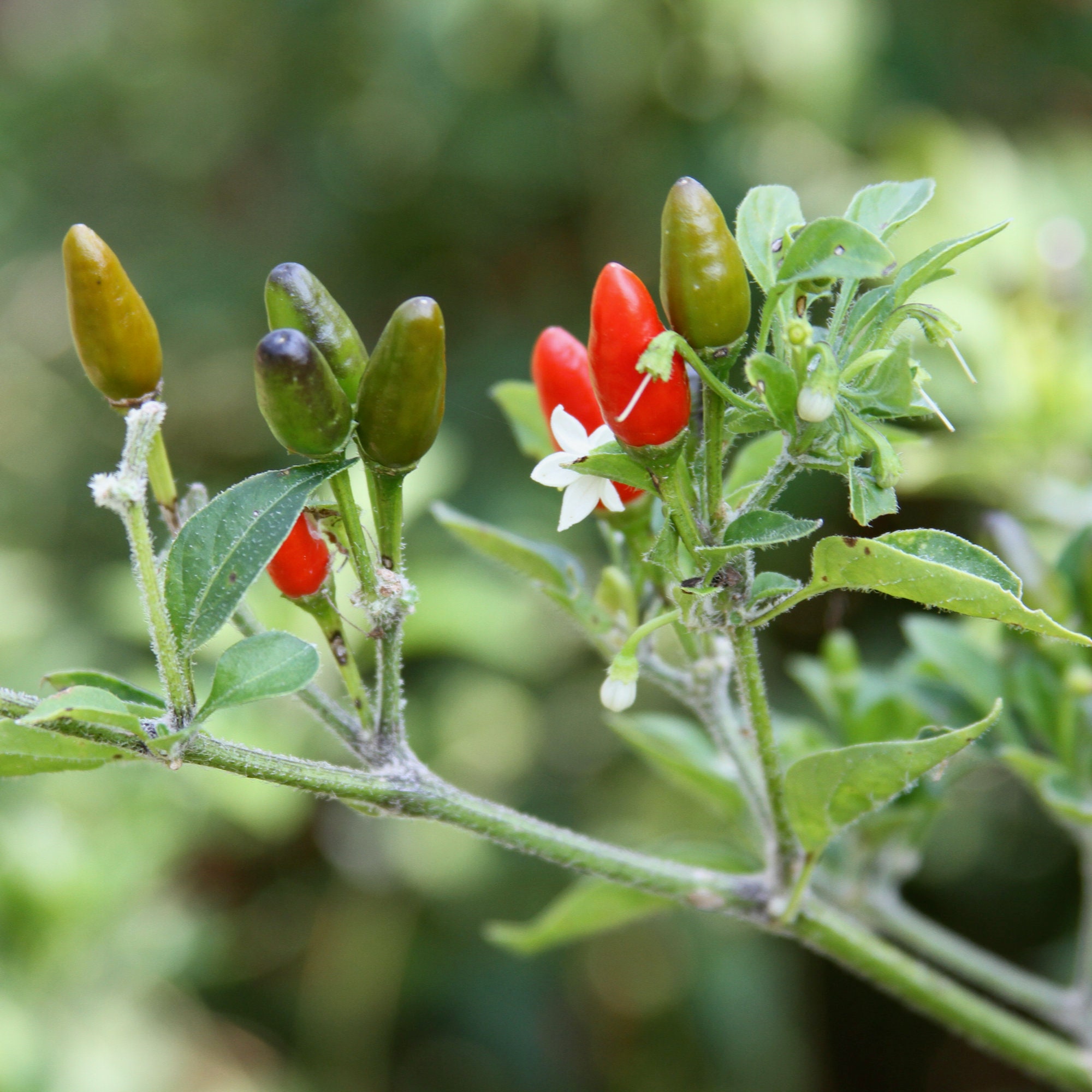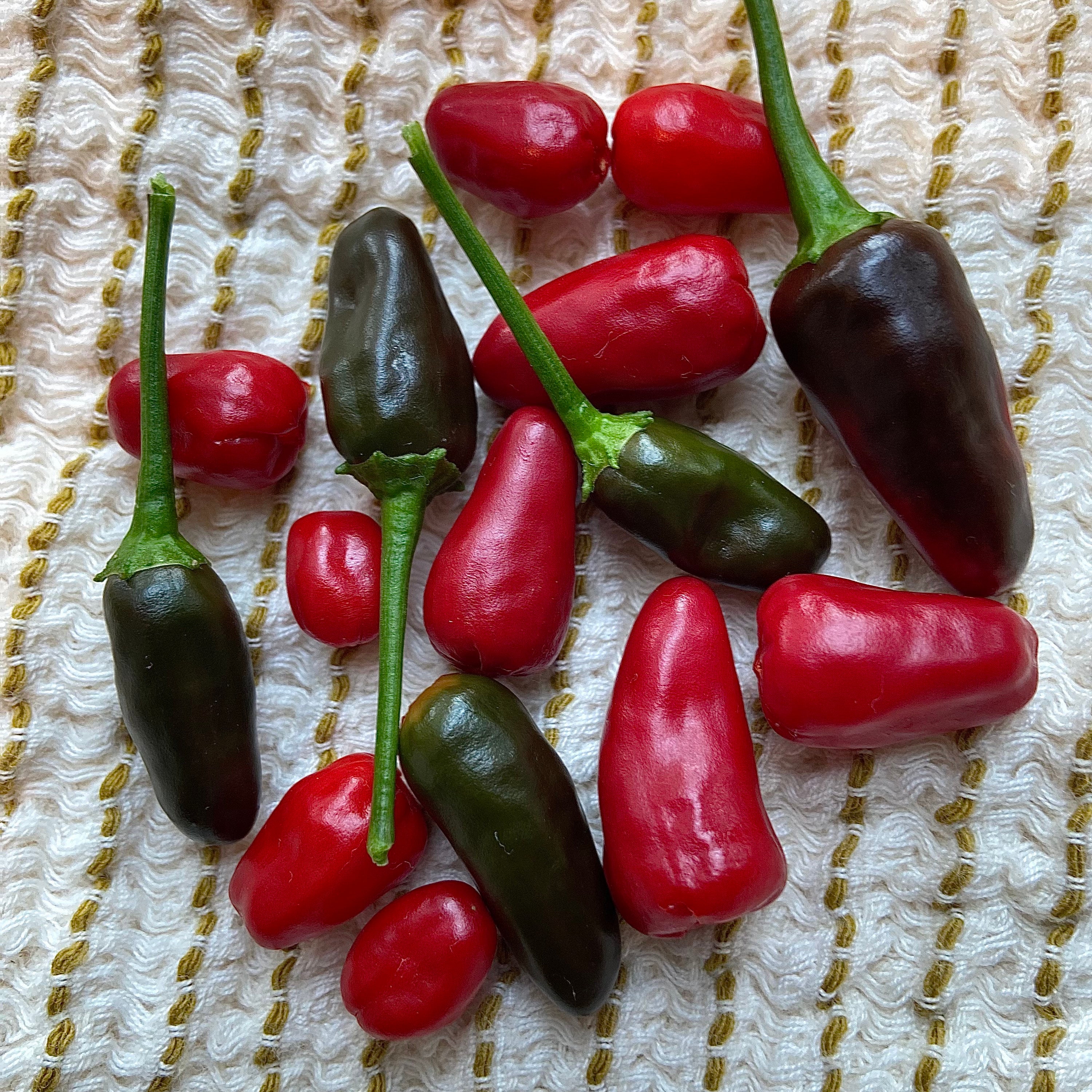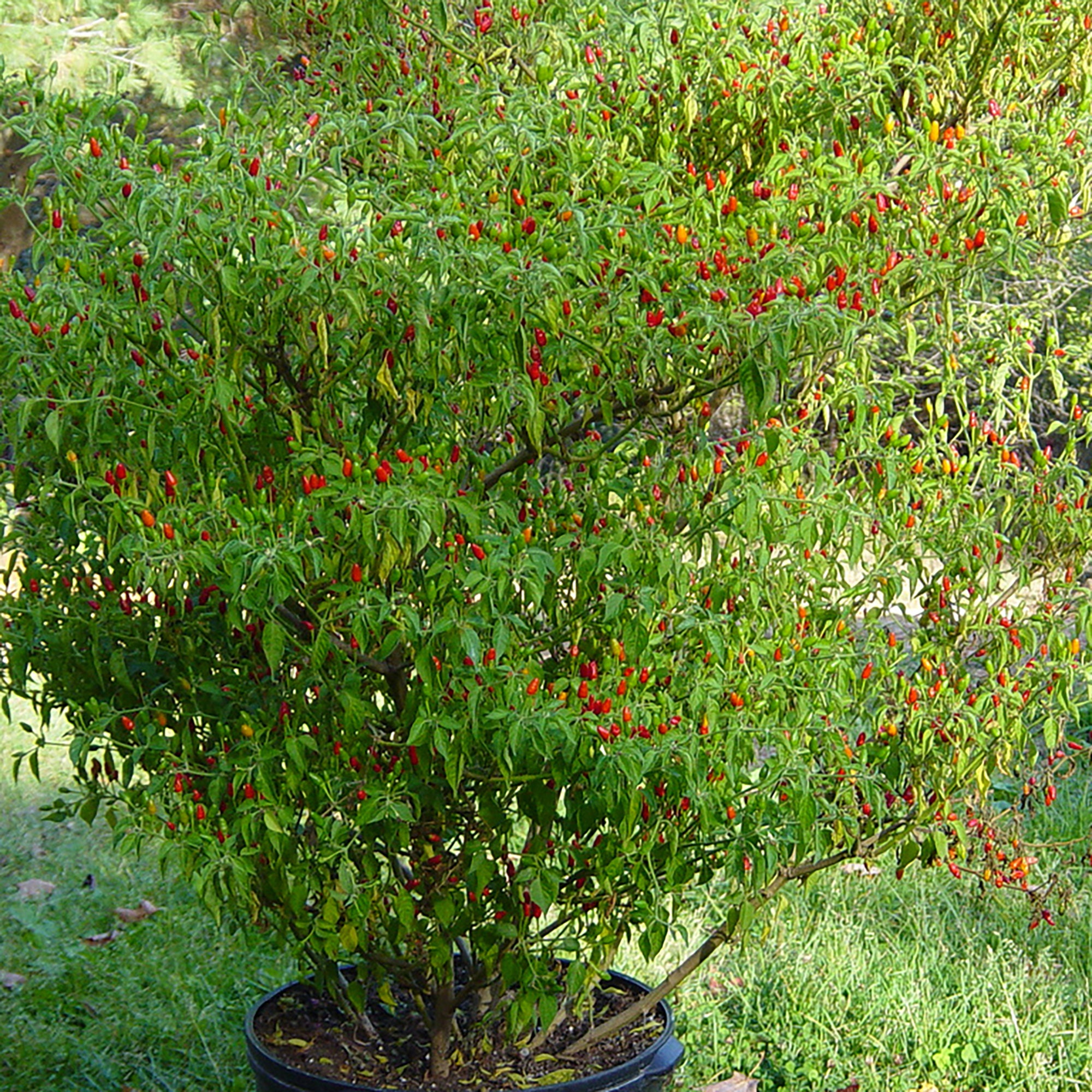Pequin Chili Pepper - Heirloom 10 seeds
$2.98
Capsicum Annum Pequin (or piquín) pepper is a hot chili pepper cultivar commonly used as a spice.
Pequin pepper originates in the Mexican state of Tabasco, where it's widely used to make salsa or complimentary to many dishes. It's also known as chile pequín / chile petín / chiltepe (in Guatemala and El Salvador), chile congo (in Nicaragua and northern region of Costa Rica), chile de monte / chile del monte / chile mosquito / mashito (by the Chontal/Maya natives in Tabasco), amash / timpinchile (in Chiapas), chilpaya (in Veracruz), maax'ik (in Yucatán) and chile kipín (in Huasteca).
Pequin has a compact habit, growing typically 0.3–0.6 meters tall, with bright green, ovate leaves and small berries that rarely exceed 2 cm in length. Like most chilies, the berries start out green, ripening to brilliant red at maturity. Pequin peppers are very hot, often 5–8 times hotter than jalapeños on the Scoville scale (30,000 to 60,000 Units). Flavor is described as citrusy, smoky (if dried with wood smoke), and nutty.
Foliage and ripe fruits
The name Pequin is thought to come from the Spanish pequeño, meaning small. Its fruit is oblong and is found in the wild from the American Southwest to the Andes. It is grown both wild and commercially harvested in Mexico.
Common uses include pickling, salsas, sauces, soups, and vinegars. The Cholula brand hot sauce lists piquin peppers and chile de arbol peppers among its ingredients.
Pequin peppers are highly valued in Mexico, often costing more than 10 times the price of other peppers, but their cultivation is limited due to low seed germination (15% average germination rate) and susceptibility to disease. Pequins prefer moderate shade levels (35% shade) and daily watering, though they are drought tolerant. In the wild, Pequins grow in the understory of trees as perennials; under cultivation, they are grown as annuals as disease susceptibilities limits their growth. Seeds germinate in 7 to 28 days, require 60 to 90 days for seedling development, and require 90 to 100 days after transplant to produce commercial fruit.
If damaged by frost, pruning off the top may allow for the plant to sprout again if the roots were not damaged.
Reviews (17)
Average:
Jan 3, 2025
I can’t wait to plant these in the spring!
Jul 18, 2023
May 5, 2023
Jan 30, 2023
Sep 20, 2022





